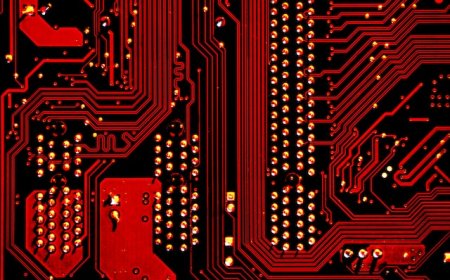How Wi-Fi Works: The Invisible Waves Connecting Our World
Discover the science behind Wi-Fi, from radio waves and frequency bands to routers and antennas, and learn how this invisible technology keeps our devices connected.

Wi-Fi has become so ubiquitous that most people hardly think about how it works. We expect our phones, laptops and tablets to connect effortlessly at home, at the office, or in a cafe. In reality, wireless networking is a sophisticated blend of physics and engineering that turns streams of zeros and ones into invisible radio waves. Understanding these principles can demystify why your signal drops in one room but not another and help you appreciate how millions of devices seamlessly share the airwaves.
At its core, Wi-Fi is a form of electromagnetic radiation. The electromagnetic spectrum spans from very low-frequency radio waves to microwaves, visible light and X-rays. Wi-Fi uses the radio and microwave portion of this spectrum, typically around 2.4 gigahertz (GHz) and 5 GHz, which correspond to billions of cycles per second. These high frequencies are ideal for carrying digital information. When you stream a video or send an email, the router encodes the digital data onto a carrier wave and broadcasts it through its antennas. Think of the carrier as a ripple on the surface of a pond; the shape of the ripple can be subtly changed to embed information.
Encoding data onto radio waves is done through modulation. Early wireless links used simple amplitude or frequency modulation, but modern Wi-Fi employs more efficient techniques such as phase-shift keying (PSK) and quadrature amplitude modulation (QAM). These methods allow multiple bits to be encoded in a single change of the wave’s phase or amplitude. For example, 16-QAM encodes four bits at once by choosing among 16 distinct states of amplitude and phase. On top of that, Wi-Fi uses orthogonal frequency-division multiplexing (OFDM), which splits the data across many sub-channels. This makes the connection more robust to interference and allows high throughput even in noisy environments.
The router plays a central role in a Wi-Fi network. It contains a radio transceiver that generates and receives RF signals, a baseband processor that handles modulation and demodulation, and a microcontroller that runs the networking software. When your device connects, the router assigns it an Internet Protocol (IP) address and acts as a traffic director, forwarding packets between the local network and the wider internet. The router’s antennas are designed to shape the radiation pattern; many modern routers use multiple-input multiple-output (MIMO) technology, where multiple antennas transmit and receive simultaneously. MIMO increases capacity by letting separate spatial streams carry independent data.
Connecting to a wireless network begins with a handshake. Your device scans the airwaves and listens for beacon frames, which are regular announcements from routers that identify themselves with a Service Set Identifier (SSID). When you select a network, your device and the router exchange management frames to negotiate capabilities and security settings. If the network is protected, you will provide a password that is transformed into encryption keys. The router then hands out an IP address via the Dynamic Host Configuration Protocol (DHCP) so that your device can start sending and receiving packets. This entire process happens in a fraction of a second.
Different frequency bands and standards influence range and speed. The 2.4 GHz band has longer wavelengths that can better penetrate walls and travel further, making it useful for long-range coverage. However, it is shared with cordless phones, Bluetooth and microwave ovens, which increases interference. The 5 GHz band offers more channels and less congestion, leading to higher data rates but shorter range because higher frequencies are absorbed more readily by walls and obstacles. Emerging Wi-Fi 6E networks add the 6 GHz band, offering even more spectrum and bandwidth for demanding applications like virtual reality.
The Institute of Electrical and Electronics Engineers (IEEE) defines Wi-Fi standards under the 802.11 family. Early 802.11b devices delivered 11 megabits per second (Mbps); later standards such as 802.11g and 802.11n introduced OFDM and MIMO to boost speeds to hundreds of Mbps. Today, 802.11ac and 802.11ax (branded as Wi-Fi 5 and Wi-Fi 6) use advanced modulation, wider channels and beamforming to deliver gigabit-class performance. 802.11ax also introduces orthogonal frequency-division multiple access (OFDMA), which subdivides the channel so multiple users can be served simultaneously with low latency. Each generation strives to improve spectral efficiency, range and throughput while maintaining backward compatibility.
Security is a vital part of wireless networking. Because radio waves propagate beyond the walls of your home or office, anyone within range could potentially intercept unprotected transmissions. Early networks used Wired Equivalent Privacy (WEP), which proved vulnerable to hacking. Modern routers implement Wi-Fi Protected Access (WPA2 or WPA3), which use strong encryption algorithms and handshaking protocols to protect your data. Always change default passwords and use WPA2 or WPA3 with a long passphrase to prevent unauthorized access. Some routers also support guest networks, which isolate visitor traffic from your primary devices.
Interference and environmental factors also affect your Wi-Fi experience. On the 2.4 GHz band, there are only three non-overlapping channels (1, 6 and 11), so neighboring networks often overlap and cause congestion. Microwave ovens and Bluetooth devices can create additional noise. The 5 GHz band offers many more channels, reducing the chance of overlap, but it suffers more from attenuation as it passes through walls. Metal surfaces, water and concrete absorb or reflect radio waves, creating dead spots where signals are weak. Mesh networks and access point placement strategies, such as elevating your router and positioning antennas, can help mitigate these issues.
As Wi-Fi continues to evolve, it remains a testament to our ability to harness the laws of physics. Future standards like Wi-Fi 7 promise multi-gigabit speeds, lower latency and improved performance in dense environments by using even wider channels and higher-order QAM. The technology will play a crucial role in enabling smart homes, augmented reality and the Internet of Things. Understanding the science behind Wi-Fi helps you make informed choices about routers, frequencies and security while appreciating the invisible waves that keep us all connected.
What's Your Reaction?













































































































